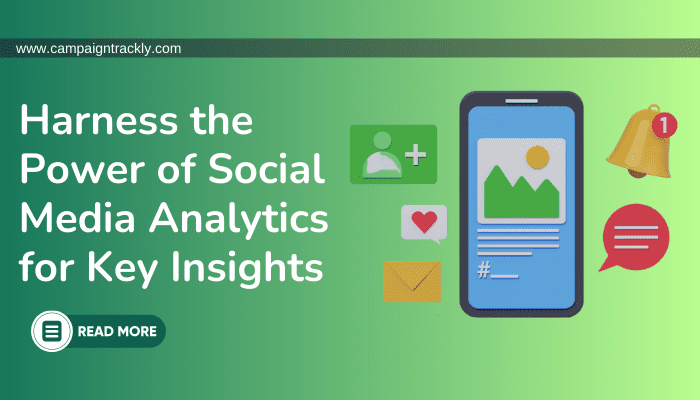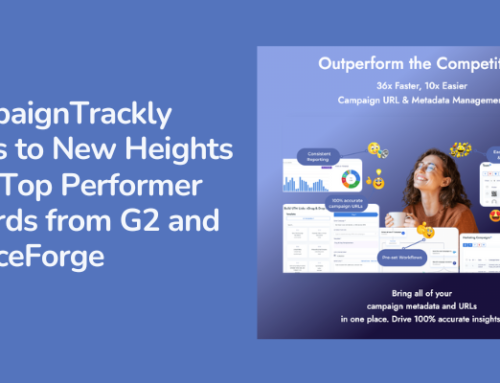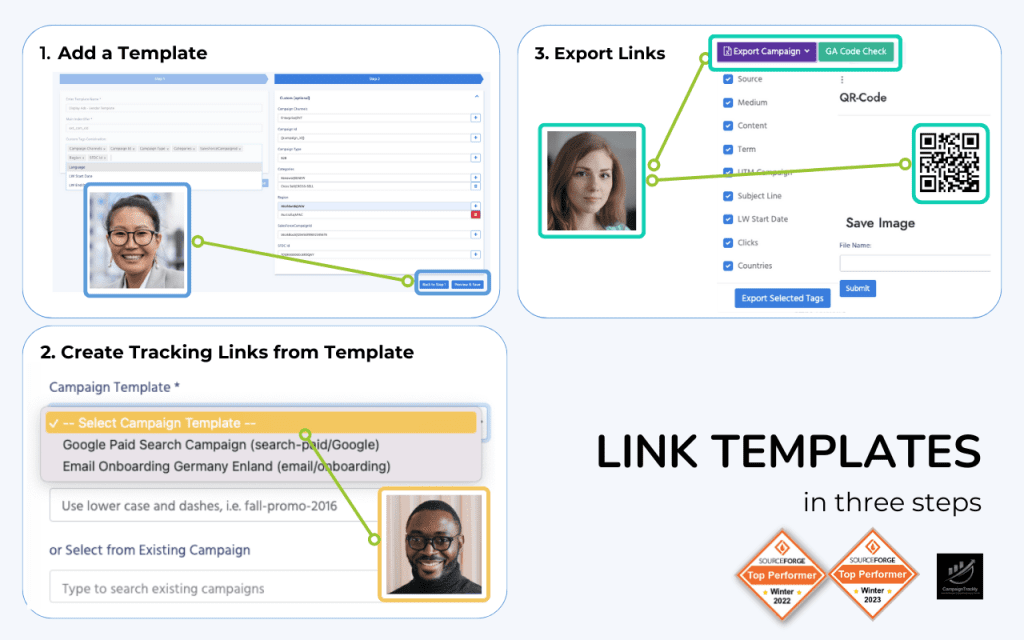By Ryan Gould
Social media analytics provides deep insights into your audience’s behavior, your campaign’s performance, and the reach and engagement of your content. However, simply having a plethora of data at your fingertips isn’t enough. The magic lies in accurate tracking, meticulous reporting, and the ability to interpret this wealth of information to create data-backed, strategic decisions.
In this blog post, we’ll delve into the world of social media analytics, explore how they can provide invaluable marketing insights, and discuss the vital role that effective tracking and reporting tools play in the process. So whether you’re a seasoned marketing veteran or just starting out, stick around as we navigate this fascinating landscape together.
The Significance of Social Media Analytics in Modern Marketing
Social media analytics has become the North Star guiding businesses through the vast and dynamic terrain of online marketing. In a world where billions of individuals connect, share, and engage on social media, it’s crucial for businesses to tap into this rich source of customer data.
So, why is social media analytics so essential in today’s marketing landscape?
Firstly, it provides key information about your audience. Knowing who your influencers and customers are, what they like, where they are, and when they’re online helps create targeted marketing campaigns that resonate. It lets you listen to the digital whispers of your audience and respond effectively.
Secondly, analytics provides insights for existing campaigns and ideas for new strategies and tactics. It allows you to measure your performance against predefined objectives, understand what’s working and what isn’t, and adjust your approach accordingly. It takes the guesswork out of marketing. It also lets you identify game-changing influencer opportunities through tools for finding influencers like this one.
Let’s consider an example: The global beauty brand, Glossier, built its empire predominantly through savvy use of social media. They extensively used social media analytics to understand their audience and tailor their marketing strategy. The insights gained from their audience’s online behavior helped them create products and campaigns that resonated deeply, contributing significantly to their rapid growth.
Then, there’s Airbnb, which has mastered the art of user-generated content (UGC). Their use of social media analytics allows them to understand which types of content generate the most engagement, helping them encourage more users to share their experiences, driving both brand awareness and bookings.
These examples underscore that, when used correctly, social media analytics can be a game-changer, turning digital footprints into paths that lead to marketing success.
Understanding the Utility of UTM Parameters and Custom Tags
Diving deeper into the tools that facilitate social media analytics, we come across two indispensable terms: UTM parameters and custom tags.
UTM parameters, or Urchin Tracking Module parameters, are simple codes added to the end of your URL. When a user clicks on a URL with UTM parameters, those tags are sent back to your Google Analytics for tracking. They’re the footprints left behind by your users, showing you exactly where they came from and what led them to your website. These parameters can help you track the source, medium, campaign name, term, and content associated with a visitor’s arrival on your site.
On the other hand, custom tags, as the name suggests, are tailored to your specific needs. They can help you categorize your content based on various factors such as topic, type of content, or even the author. These tags can greatly enhance the granularity of your tracking.
Together, UTM parameters and custom tags can provide detailed information on how users interact with your campaigns. They can tell you which social media platform is driving the most traffic, which campaign is performing the best, and even which type of content your audience prefers. This, in turn, enables you to allocate resources efficiently and tailor your campaigns for maximum effectiveness.
Remember, social media analytics is not just about collecting data; it’s about understanding this data and transforming it into actionable insights. UTM parameters and custom tags are the powerful tools that enable you to do just that. They empower you to listen to your audience, learn from them, and ultimately, leverage that knowledge for your brand’s success.
Key Performance Indicators (KPIs) and Metrics in Social Media Analytics – An Overview
In order to extract valuable insights from social media analytics, one must pay attention to Key Performance Indicators (KPIs). KPIs are quantifiable measures used to evaluate the success of an organization, employee, or, in this case, a social media campaign. They serve as a navigational tool, helping to steer your strategy in the right direction.
Here are 6 Social Media KPIs and the 33 metrics that drive them.
What are Social Media Metrics?
Metrics are the raw data points that measure various aspects of your social media activity, including likes, shares, comments, clicks, and more. They provide a quantitative snapshot of what’s happening in your social media landscape. However, metrics alone might not give a complete picture. They provide data on performance, yes, but without a defined context or goal, their standalone value in driving actionable insights might be limited.
What is the Value of Social Media KPIs?
KPIs are a composite of several different metrics. The metrics are grouped together to evaluate the effectiveness of a social media strategy in achieving specific business objectives, such as lead generation, conversion, and revenue growth.
So, while metrics give you raw numbers, KPIs tell a story. They provide a broader view of how your social media activities are creating value for your business. This context makes your data meaningful and actionable, allowing for an optimized marketing strategy.
Let’s use an analogy. If metrics were the ingredients for a recipe, KPIs would be the finished dish. You need the ingredients (metrics), yes, but it’s the combination and the end result (KPIs) that truly matter.
Remember, the power of social media analytics lies not just in collecting data, but in understanding and leveraging it to make informed decisions. That’s why, in the context of social media marketing, knowing the difference between metrics and KPIs is crucial. It helps you focus your attention on what really matters – driving performance and achieving your strategic goals.
How to Take Action Based on Social Media Analytics Insights
Social media analytics isn’t just about collecting and analyzing data—it’s also about using these insights to refine your strategies and deliver more effective campaigns. Here are some actionable tips on how you can do just that:
1. Refine Your Content Strategy
Understanding which types of content resonate with your audience can significantly improve your content strategy. If your analytics indicate that videos generate higher engagement rates than images, consider incorporating more video content into your strategy. On the other hand, if long-form blog posts lead to higher conversion rates, prioritize creating more in-depth content.
2. Optimize Posting Times
Social media analytics can also tell you when your audience is most active. Leveraging this information can help you optimize your posting schedule to ensure maximum visibility. Remember, posting when your audience is online can increase the likelihood of engagement.
3. Understand and Adjust to Your Audience
Knowing your audience’s demographics and interests can help you create content that resonates with them. If your primary audience is millennials who love fitness, incorporating relevant trends or topics into your content could lead to higher engagement. Similarly, if a particular demographic shows high conversion rates, consider adjusting your targeting to focus more on this group.
4. A/B Testing
Utilize the power of social media analytics to perform A/B testing. This involves changing one variable in your content (like headlines, images, or call-to-actions) and measuring which version performs better. This can help refine your content creation efforts based on what specifically appeals to your audience.
5. Respond to Changes in Real-Time
Social media landscapes evolve rapidly, and so do audience preferences. Regularly reviewing your social media analytics can help you respond to changes in real-time, allowing you to tweak your strategy promptly and maintain high engagement and conversion rates.
These actionable insights derived from social media analytics can lead to data-driven decisions, helping you optimize your social media strategy and deliver campaigns that truly resonate with your audience. Remember, social media success isn’t just about reaching your audience—it’s about engaging them, captivating them, and ultimately, converting them.
Final Thoughts
The power of social media analytics extends beyond mere data collection; it is a compass that guides marketers through the vast and ever-changing landscape of digital marketing. By understanding and harnessing this power, marketers can turn raw data into compelling stories about their audience, their performance, and their success.
From the minute details of UTM parameters and custom tags to the broader perspectives offered by Key Performance Indicators, each element of social media analytics plays a pivotal role in painting a comprehensive picture of your marketing efforts. This picture, in turn, serves as a roadmap, directing you towards content strategies, posting times, target demographics, and other elements that resonate best with your audience.
Moreover, social media analytics isn’t a static field; it evolves as rapidly as the social media landscape itself. Keeping a vigilant eye on these analytics allows marketers to adapt their strategies in real-time, ensuring they remain relevant and effective.
As we continue to navigate through the digital age, the importance of social media analytics only grows stronger. Embracing these analytics and implementing data-driven strategies is no longer just an option—it’s a necessity for any marketer looking to thrive in today’s competitive environment. After all, the ability to listen to your audience, learn from them, and leverage this knowledge for your brand’s success is the ultimate power that social media analytics offers. Harness it, and you’ll be well on your way to achieving your marketing goals.
This article is a guest blog written by:
Ryan Gould
Vice President of Strategy and Marketing Services
From legacy Fortune 100 institutions to inventive start-ups, Ryan Gould brings extensive experience with a wide range of B2B clients. As the Vice President of Strategy and Marketing Services at Elevation Marketing, he skillfully architects and manages the delivery of integrated marketing programs. He strongly believes in strategy, not just tactics, that effectively align sales and marketing teams within organizations.
LinkedIn: https://www.linkedin.com/in/rygould/











